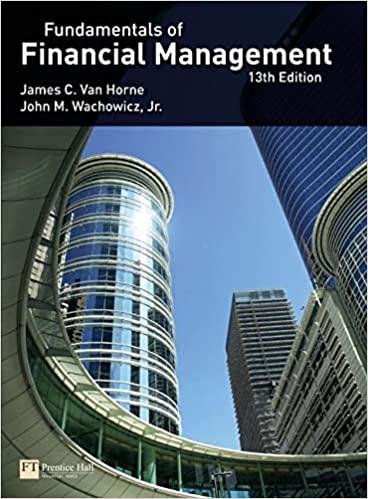Question
Appendix Q2.2: Manufacturing Unit's Business Proposal to Move Production from China to India The following information has been prepared by a business development team. The
Appendix Q2.2: Manufacturing Unit's Business Proposal to Move Production from China to India
The following information has been prepared by a business development team.
The establishment of a production facility on the outskirts of Mumbai would cost US$80m. 80% of this investment would be payable at the end of year one, with the remainder payable now. The Indian government incentivises foreign direct investment, with incentives including capital grant funding of up to 50% of the initial capital investment, payable in equal instalments over 5 years, starting in year 1. No writing-down allowance is available on any element of the capital expenditure as a result of the capital grant provision. The grant funding is repayable if the company leaves India within 5 years.
In addition, a working capital investment of US$40m would be required at the outset of the investment and recovered at the end of the project. A subsidiary company (Jasmine India) would be the corporate vehicle through which the company would operate in India. US$40,000 has already been incurred to date, exploring a company's legal structure in India.
A loan facility of US$80m would be established with Bank India to finance the construction of the production facility, with the interest rate cost expected to be 15%. In addition, an overdraft facility of US$100m would be established with an interest rate of 18%.
Use the overall Group cost of capital benchmark for investments of this nature of 10% to appraise this capital proposal.
The following plant projections have been provided and are expressed in current terms:
| Year 1 $ | Year 2 $ | Year 3 $ | Year 4 $ | Year 5 $ |
Reduced labour costs | 25,000,000 | 23,000,000 | 21,000,000 | 19,000,000 | 17,000,000 |
Savings on distribution costs | 5,000,000 | 5,000,000 | 5,000,000 | 5,000,000 | 5,000,000 |
The corporate tax rate for investors in India is 10% based on sales value for the relevant year and is paid one year in arrears.
By relocating to India, it is expected that sales demand will increase 30% compound per annum over the 2023 sales units achieved from the China plant. The reduced cost base on relocating to India is expected to enable a reduced pricing point of US$45 per unit of product (on average), thus generating additional sales demand. A net margin of 30% is assumed on the additional sales.
An estimate of US$30m per annum (in current terms) has been computed to allocate the parent entity's central fixed costs to this activity.
The China facility's plant closure and wind-down costs are expected to be equivalent to US$50m, with 30% payable now and the balance payable at the end of year 1.
As part of the conditions for the original investment in China (and any incentives received by Jasmine), the sale of the plant and associated lands in China cannot be realised until year 3 post-cessation of activities. The expected net sales value in year 3 is US$100m. The land in China had an original cost of US$45m.
Ignore inflation.
All transactions have been reflected in US$ as part of the capital proposal generation. There is no tax impact on transactions included in the NPV analysis associated with the China facility. The capital grant received from the Indian government is not subject to tax in India
Step by Step Solution
There are 3 Steps involved in it
Step: 1

Get Instant Access to Expert-Tailored Solutions
See step-by-step solutions with expert insights and AI powered tools for academic success
Step: 2

Step: 3

Ace Your Homework with AI
Get the answers you need in no time with our AI-driven, step-by-step assistance
Get Started


